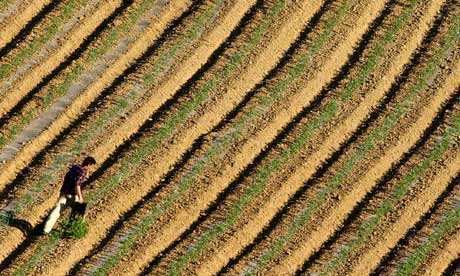The WE MED Conference took place in Athens, Greece on December 16th, 2016. It was an event of the ENI CBC Med programme, aiming at bringing together various types of stakeholders interested in joining forces towards addressing common issues in the Mediterranean countries. The programme itself provides both the framework and the funding needed for materializing collaboration among Med countries.
I was informed about the event a month ago; still, the registration was already closed due to high participation. My persistence along with kind responses from the organizing team granted me a place in the waiting list and then I was informed that I would be among the participants. And I was glad I would.
The event was organized in three themed sessions:
- Get Inspired: Consisted of successful use cases of collaboration among Mediterranean countries (presenting projects funded by the programme) as well as the views of key stakeholders. I found this session really appealing as it provided the human face of the collaboration; instead of having these typical slides including lists of deliverables of projects, there were real people (like farmers, researchers and entrepreneurs, to name a few) that explained how their lives were positively affected by the aforementioned collaborations.
- Learn: It consisted of a number of presentations about the ENI CBC Med programme, covering different aspects. The slides provided the necessary background to participants in order to understand the concept and opportunities that may be available for funding collaborations of innovative groups and ideas. Lots of useful information on the eligibility of countries and thematic areas, restrictions and guidelines.
- Connect: A purely networking session, allowing participants with common expectations to get in touch, exchange ideas and find common ground to work on projects that would address common challenges. The main Conference room was split into numerous smaller places with card boards used as whiteboards for brainstorming, matching profiles of participants with needs of organizations and discussing on issues of common interest.
Warm stories of #Entrepreneurship, #innovation & #collaboration presented at the 1st session of the #WEMED Conference pic.twitter.com/KDbk3YjBuZ— V. Protonotarios (@vprot) December 16, 2016
The event provided me with the opportunity to get to know and talk to people from various countries, working on different topics and looking for partners in order to address common challenges. As I was participating on behalf of NEUROPUBLIC, I focused on sharing information about our smart farming services and see how they could meet the needs of potential stakeholders from other Med countries; the possibility of applying our approach in different contexts sounded appealing and I managed to identify at least a couple of cases which we could follow up after the Conference. Apart from that, I was well-informed about the possibilities provided by the programme in turning such collaborations into projects.
Interested in #SmartFarming in #Mediterranean countries? Check out our proposal at the #WEMED Conference Cooperation wall! pic.twitter.com/hGQt40Zvid— NEUROPUBLIC (@Neuropublic) December 16, 2016
From an organizational perspective, I was happy to see that the organizers had already defined a Twitter hashtag (#WEMED) so that all tweets would be grouped and easily retrievable. During the Conference I was tweeting using both my personal Twitter account and the NEUROPUBLIC one, trying to cover different aspects of the event and boost the dissemination of its updates. There was also a Cooperation Wall; a huge whiteboard where participants could stick post-it notes with their ideas and contact details. I surely made use of that functionality as well and found the idea brilliant.
The Conference organizers had also engaged Alex Hughes from Drawnalism, who always does a great work in depicting ongoing discussions in the form of cartoons - a great visualization mean if you ask me! On top of that, everything was well-organized; something that must have been a challenge considering the relatively high number of participants.
Can't help but love such drawings; they give a different perspective to a Conference like #WEMED! https://t.co/pNSNxr1HL0— V. Protonotarios (@vprot) December 16, 2016
If you are interested in learning more about the outcomes of the WE MED Conference, you can go through the summary provided by the programme team - you can also watch some of the Conference's video recordings via the ENI CBC Med Programme YouTube channel.
I can only thank the organizers of the event, not only for the kind invitation but also for hosting a successful meeting, engaging so many different stakeholders and doing their best in assisting them through networking and identifying funding opportunities for their innovative ideas.















